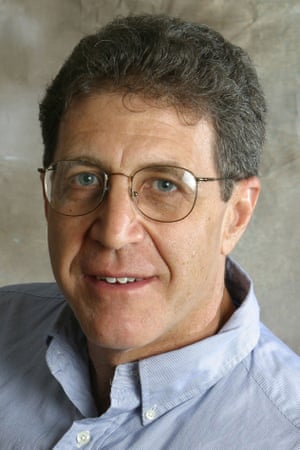 |
| Robert F. Kennedy prepares to speak at DeFremery Park, Oakland, 1 June 1968. Photograph: Stephen Shames |
Stephen Shames' best photograph: Robert Kennedy in his final days
‘This is Robert Kennedy at a rally days before he was assassinated. Notice how close I am. There wasn’t any security back then’Interview by Dale Berning Sawa
Thu 18 Oct 2018 08.21 BST
I
took this shot of Robert Kennedy on 1 June 1968, four days before he was assassinated, at a rally in the run-up to the California Democratic primary.
You notice how close I am. Kennedy was standing on a platform in DeFremery Park, West Oakland. I jumped up and Jesse Unruh, who was speaker of the California State Assembly at the time, asked who I was. “A student,” I said and he let me stay up there. There wasn’t any security back then.
It was early afternoon. I took about 40 frames – a couple of rolls of film. Here, I think he may have been about to talk. He was looking at the crowd, nervously scratching his head.
Kennedy was a charismatic figure who could electrify a crowd. He was articulate and intelligent, which makes me almost want to cry if I compare him to whatshisname, whose name I won’t mention, now sitting in that office that Bobby was running for.
I was in my third year studying history and anthropology at the University of California at Berkeley. As a freshman, my roommate convinced me to run for the student council. I got elected, but I hated it; I couldn’t stand the infighting. In 1966, I picked up my first camera, and I decided I wanted to be the artist of the revolution, not a leader.
I met Bobby Seale, the chairman of the Black Panther party, in 1967. He became a mentor to me. I started having my pictures published in the Black Panther paper and in the Berkeley Barb, the underground paper. If it hadn’t been for the Vietnam war, and the fact that I needed to keep my student deferment to not be drafted, I might very well have dropped out of school and just pursued photography. But I stayed and graduated.
My education, though, happened out on the streets. History was going on right in front of me. The campus was on strike for most of 1968 and 1969. There were anti-war marches and demonstrations to establish black studies. Everyone came through Berkeley. Name any important figure from the 1960s, I probably have a photograph of them. Tom Hayden, Martin Luther King, Stokely Carmichael, Tim Leary, Cesar Chavez, Angela Davis, Abbie Hoffman, Jerry Rubin, Joan Baez, James Baldwin, Mike Bloomfield … At the time, though, we thought that was just life.
I don’t remember exactly where I was when Kennedy was shot. It was 5 June, the night of the primary. I was probably with friends watching TV to see who’d won. We were pretty sure the winner would become president. There was tremendous hope in the air. As members of the student movement, we were feeling optimistic and powerful. The very fact that Kennedy was running was a response to our protests against the war, which had led to Lyndon Johnson not seeking a second term. Kennedy had come out against the war. It wasn’t that we thought he was a revolutionary, but on issues such as civil rights and poverty, we knew he could make changes.
Mostly we knew he was a unifier. He was popular among white working-class voters, students and young people, African American and minority voters. We thought he could begin to heal the racial divides that had been tearing our country apart for ever.
Then he gets shot. And it’s like: “We’re never going to let this happen, this is America. You guys are naive.” Of course, this came right after Martin Luther King was assassinated, and not that long after JFK. That was a horrible period in the US. Progressive leaders were getting knocked off right and left. Kennedy being assassinated and Richard Nixon winning was the end of the hope.
There are clear parallels for me with what’s happening right now. Most 21 year olds are idealistic. Everyone grows up a patriot. You’re in school, you salute the flag, you read the sanitised history in your textbooks. Then there’s a polarising moment like this that shoves you into the real world.
In the US, beyond the election of Trump, which was a fluke, Brett Kavanaugh’s confirmation to the supreme court is one such moment. Young people here having their eyes opened. They are realising there’s a dark side to the United States. Their idealism is being shaved away.
• Power to the people: The Black Panthers photographs of Stephen Shames is at the Maison Folie Moulins in Lille until 6 January 2019.
Stephen Shames’ CV

Born: Cambridge, Massachusetts, 1947.
Training: Self-taught. Mentored by San Francisco Associated Press Bureau and the Student Union Art Studio at the University of California at Berkeley. So I had art and photojournalist mentors.
Influences: Dorothea Lange, W Eugene Smith, Jacob Riis, and many others
High point: Right now.
Low point: After the 1960s ended.
001 My best shot / Mario Testino / Eva Herzigova
002 My best shot / Martine Franck / The bird on the monk's head
003 My best shot / Alec Soth / Melissa
004 My best shot / Gregory Crewdson / The woman was an alcoholic
2007
Gered Mankowitz's best shot / The Rolling Stones
2009
Photographer Chris Levine's best shot / The Queen
2011
2014
Julian Wasser's best shot / Roman Polanski at the scene of the Manson family killings, 1969
2015
2016
2017



No comments:
Post a Comment